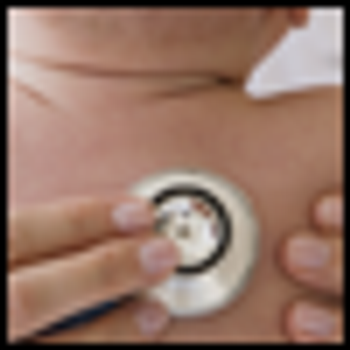
In schizophrenia therapy, the question arises whether a patient with hyper-religiosity as a main symptom can be treated with an antipsychotic (like clozapine) that targets that symptom.

In schizophrenia therapy, the question arises whether a patient with hyper-religiosity as a main symptom can be treated with an antipsychotic (like clozapine) that targets that symptom.

Narcissistic personality disorder is largely understudied, in spite of clinicians' warnings that this is the most frequent presentation in patients.

In spite of a chronic mental illness (schizophrenia)and a psyche that increasingly blurred the boundaries between fantasy and reality, this lawyer and professor graduated from Vanderbilt with a perfect academic record.

Dr John C. Whitehorn shaped mental health policy at the national level, and his influence is still alive in his former residents and the young psychiatrists we have trained.

Psychiatry has much in common with dentistry. After all, long ago psychiatry threw its lot in with the rest of medicine-that is, general medicine, specialty medicine, and surgery.

What effect has the new antipsychotic Latuda had in patients with psychosis? Is a mood stabilizer as an adjunctive therapy necessary for schizophrenia or is the use of an antipsychotic alone sufficient?

The primary difference between malingering and factitious disorder is the question of motivation.

Our exchanges be marked by basic respect and civility-and by a willingness to take personal responsibility for what we say and how we say it. Physicians ought to be in the vanguard of such an Internet reformation.

With the recent tragedy in Colorado and the high likelihood that questions about psychiatry will be inextricably tied into it, guidance for practicing psychiatrists can be gleaned from this coincidence.

"Internet Addiction" may soon spread like wildfire. All the elements favoring fad generation are in place . . . the profusion of alarming books; the breathless articles in magazines and newspapers; extensive TV exposure; ubiquitous blogs; the springing up of unproven treatment programs; the availability of millions of potential patients; and an exuberant trumpeting by newly minted "thought leading" researchers and clinicians. So far, DSM-5 has provided the only restraint.

Anti-psychiatry proponents forget it is widely recognized that the DSM is a provisional diagnostic system pending progress in better understanding uniquely human disorders of our most complex organ.

When you have a strong team, you can provide quality mental health care and have an immensely satisfying career-even in the middle of a cornfield.

A common misconception about the history of mental illness is that, before Freud and psychoanalysis, there was no such thing as talk therapies or what is commonly known today as psychotherapy.

This tale involves a “clever” inmate. He enjoyed the respectable rung of bank robber, but found he had suddenly descended to approximately the level of a sex offender. The reason for his slippage was the inmate code, which demands allegiance to other inmates under virtually all circumstances. “Ratting out” a fellow inmate may cost one his life, or at the very least, result in a decidedly anxious, paranoid existence.

The shooting in Colorado is obviously a tragedy for the victims and their families which will never be forgotten by those close to anyone touched by this event. It will cause painful grieving among the families and friends of those who lost their lives.

Psychiatric Liability: A French Psychiatrist Sentenced After a Murder Committed by Her Patient Carol Jonas, MD, JD and Nidal Nabhan Abou, MD

Psychiatry has no way to predict mass murder and no way to prevent it. There is no indication that psychiatry can change the statistics of violence or the proclivity of the violent.

My advice to residents is that you remain open to the opportunities that surround you every day as you continue your education and professional training.

The role of subtyping and bipolarity in TRD was discussed in Part 1 of this 2-part article. Here we review a number of the most common confounding factors of TRD but limit our scope to comorbidities that can be directly addressed and treated by psychiatrists.

Here we discuss how advancements in anesthesia techniques and ECT procedures make ECT more comfortable and tolerable for patients.

It appears that the risk is greater with antidepressant use during late pregnancy but may be elevated with use during early pregnancy as well.

Ongoing advances in functional brain imaging will permit studies on postulated roles of magnetic fields, biophotons, and macroscopic highly coherent quantum field effects on normal brain functioning and mental illness.

Psychotherapy is a rubric--an umbrella under which a vast array of differing interventions exist. Its diverse forms are supported by different ideologies and vocabularies.

Effective personalized treatment recognizes bipolar disorder as a biopsychosocial disorder, but mood-stabilizing medications are the backbone of treatment. These medications fall into 3 categories: lithium, antikindling/antiepileptic agents, and second-generation antipsychotics.

Wild Night, after the cops came to shut the music down, after friends and family were headlights pointed toward home...

Two recent publications provide clinically relevant information about the risk to benefit ratio of antidepressants for the treatment of MDD in youths, adults, and the elderly.

Should we accept the analysis of a journalist who has not treated a patient or implemented a study and reaches conclusions that run counter to well-established practice guidelines?

Clinicians tell patients that we will keep their information private and then turn around and put it into an electronic health record that can do just the opposite. . . . Putting confidential information into an electronic health record can be like putting it up on a billboard.

There is no psychiatric solution for mass murder. What are the warning signs? Is there a way to protect victims? What can we do to prevent an awful tragedy from constantly recurring?

We do not need psychiatrists who fit people into categories and slots and treat them as if they are robots, according to the dictates of a recipe book called “The Diagnostic and Statistical Manual.”